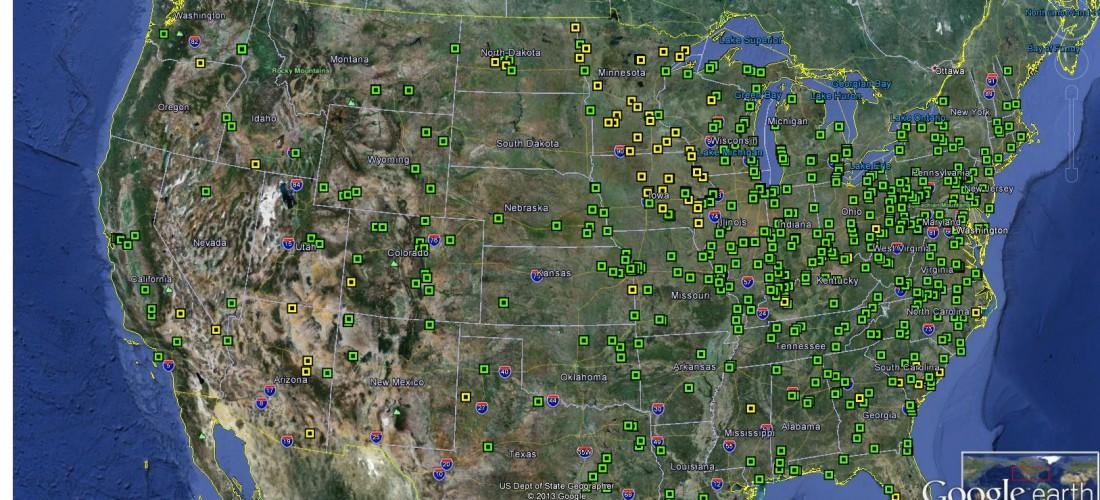
A sample image from the AWSIS system.
According to the U.S. Geological Survey, in the United States more fresh water is now used for thermoelectric power production (41%) than for agricultural irrigation (37%). Major energy producers—like coal-fired power plants, which produce about 40 percent of our electricity—require about 150 billion gallons of fresh water per day to produce the electricity we need. While dry cooling solutions for thermal power plants are still under development, plant operators are looking for nontraditional water sources.
Now, thanks to a Department of Energy-supported project, there’s an app that catalogs in one place different water sources that can be used for electricity production instead of valuable, limited fresh water.
Working under the Office of Fossil Energy’s Innovations for Existing Plants water program, implemented by the National Energy Technology Laboratory, Tulsa-based Arthur Langhus Layne (ALL) Consulting LLC has developed an internet-based geographic information system (GIS) that catalogs nontraditional sources of water for coal-fired power plants.
The GIS application employs a Google Earth interface to allow plant operators to zero-in on alternative sources of water. Called the Alternative Water Source Information System (AWSIS), the application facilitates in-depth analysis of the location and characteristics of available nontraditional water sources.
Here’s how it works. Using the Google Earth interface, the user can select a power plant by clicking on a map symbol or by searching for a specific power plant by plant name or operator. A pop-up balloon displays basic plant information. With another click, the user can get additional plant information and a summary of alternative water sources within a 15-mile radius – which can include abandoned mine pools, oil- and gas-produced water, saline aquifers, or publicly owned treatment plants. If the summary indicates the presence of alternative water sources within 15 miles, clicking a tab will display its available location, volume, and quality. Only flows above 1,000 gallons per minute, which represents about 20 percent of the cooling tower requirement for a 500-megawatt power plant, have been included in the AWSIS database. And to provide the best possible information, AWSIS will be updated as new data becomes available.
Providing the electricity we need while preserving our supplies of fresh water is a challenge. But with AWSIS, meeting that challenge could be just a few clicks away.

